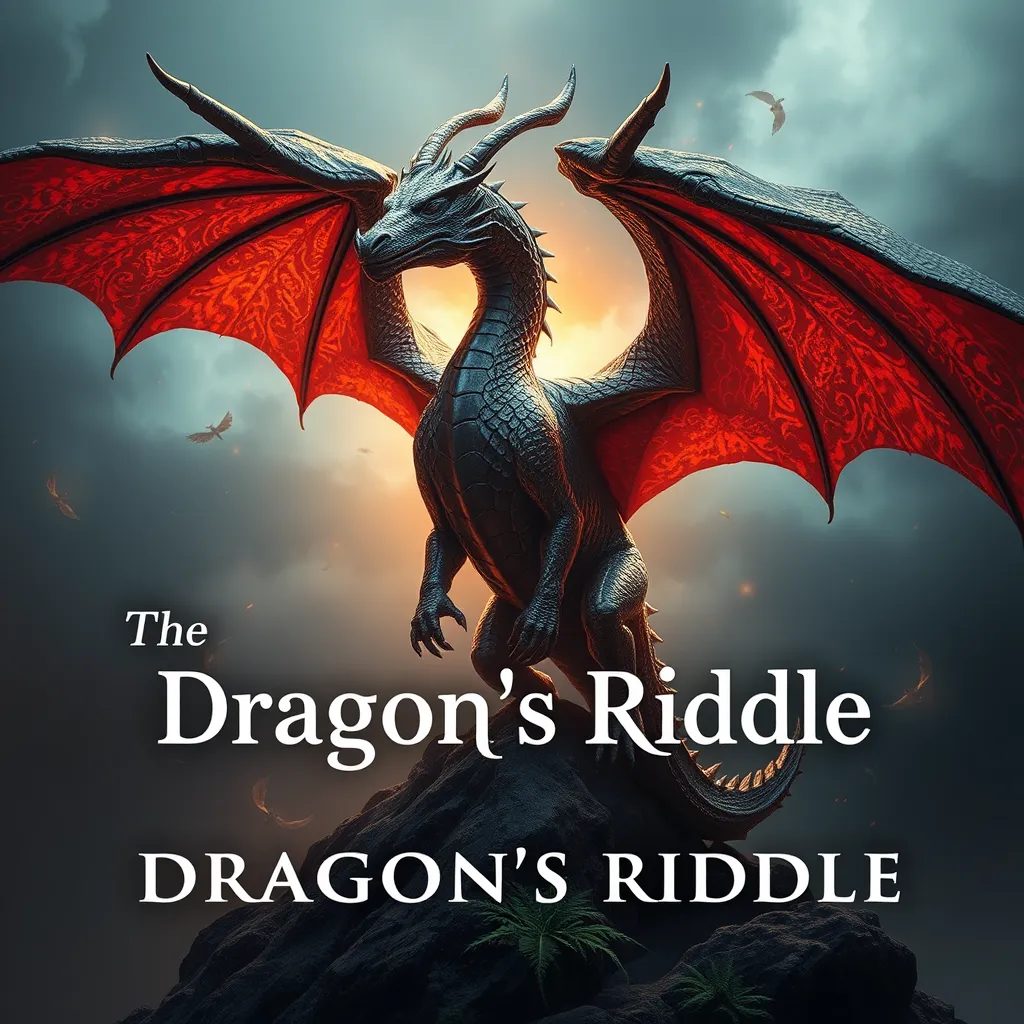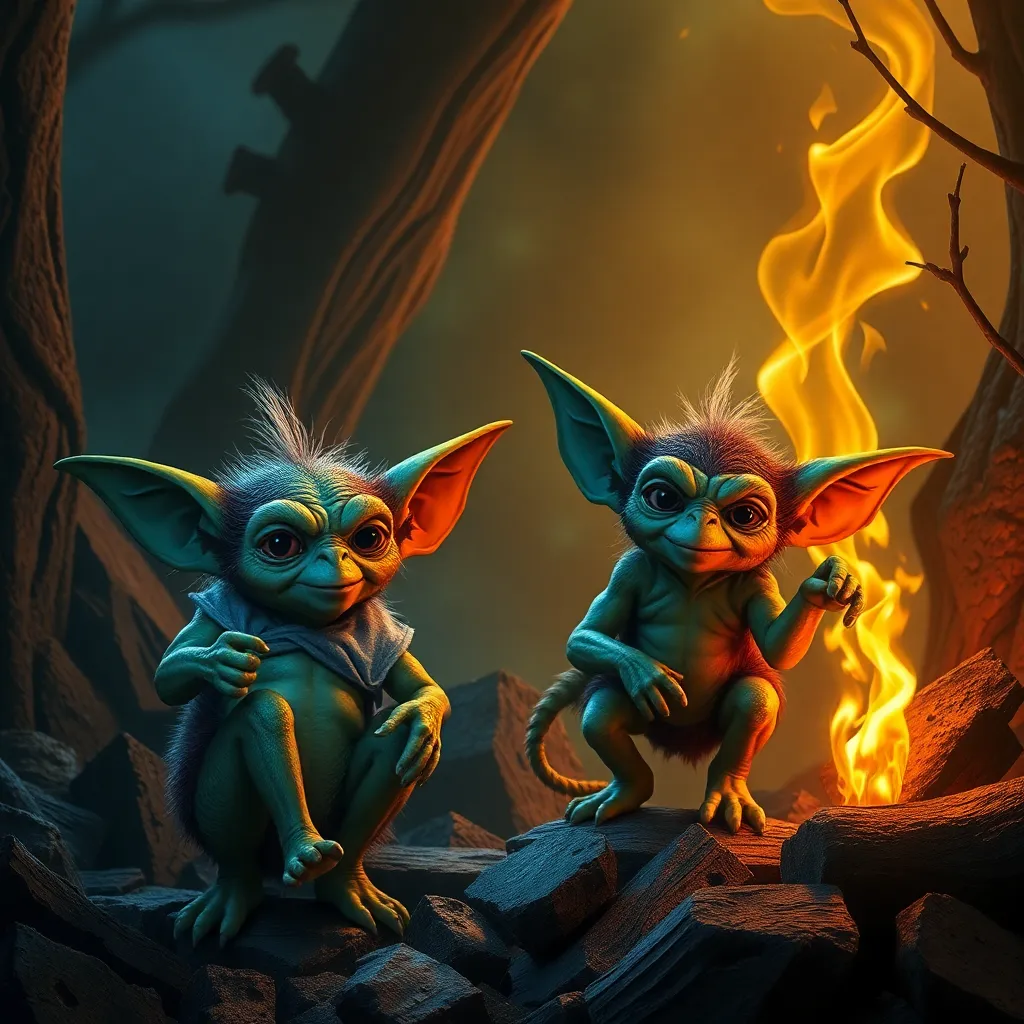The Dragon’s Riddle: Examining the Enigmatic and Mysterious Aspects of Dragon Lore
I. Introduction to Dragon Lore
Dragons have captured the human imagination for centuries, standing as powerful symbols in various mythologies around the globe. These magnificent creatures, often depicted as large, serpentine beings, possess an array of traits that symbolize both benevolence and malevolence, wisdom and chaos. The significance of dragons in mythology cannot be overstated, as they reflect the cultural values, fears, and aspirations of the societies that created them.
This article aims to explore the mysterious aspects of dragon lore, delving into their origins, symbolism, cultural variations, and enduring presence in literature and popular culture.
II. The Origins of Dragon Myths
The tales of dragons can be traced back thousands of years, with historical contexts revealing a rich tapestry of stories across various civilizations.
A. Historical context of dragon tales
From ancient Mesopotamia to the far reaches of Asia, dragons have been part of human storytelling. The earliest records of dragon-like creatures can be found in the mythologies of the Sumerians and Babylonians, where they were often associated with chaos and the primordial forces of nature.
B. Common themes and archetypes in ancient cultures
Dragons frequently embody duality in their narratives, representing both creation and destruction. Common themes include:
- Dragons as guardians of treasure or sacred knowledge.
- Dragons as adversaries to be vanquished by heroes.
- Dragons symbolizing natural disasters such as floods and storms.
C. Influence of natural phenomena on dragon myths
Many dragon myths were likely inspired by the awe-inspiring natural phenomena that ancient peoples observed, such as volcanic eruptions, thunderstorms, and large reptiles. The imagery of dragons soaring through the sky and spewing fire can be seen as metaphors for these powerful forces of nature.
III. Symbolism and Meaning of Dragons
Dragons are rich in symbolism, often embodying complex meanings that vary across cultures and contexts.
A. Dragons as symbols of power and wisdom
In many cultures, dragons are revered as potent symbols of strength, wisdom, and authority. They are often depicted as wise beings possessing knowledge of the universe and its mysteries.
B. The duality of dragons: benevolent versus malevolent representations
Dragons can be seen as benevolent protectors or malevolent foes. For example:
- In Western mythology, dragons are often portrayed as evil creatures to be slain by brave knights.
- In Eastern traditions, they are frequently viewed as auspicious beings, bringing rain and good fortune.
C. The role of dragons in personal and collective unconscious
Psychologically, dragons can represent our fears, desires, and the struggles within our unconscious mind. Carl Jung suggested that dragons symbolize the shadow self, embodying the darker aspects of human nature that we must confront.
IV. Cultural Variations of Dragons
Dragons appear in numerous cultures worldwide, each with unique characteristics and significance.
A. Western dragons: characteristics and folklore
Western dragons are typically depicted as large, fire-breathing reptiles with bat-like wings. They are often associated with greed and destruction, hoarding treasures and terrorizing villages.
B. Eastern dragons: spirituality and cultural significance
In contrast, Eastern dragons are often seen as benevolent and wise. They are linked to water and agriculture, symbolizing fertility and prosperity. Chinese dragons, for instance, are celebrated in festivals and associated with imperial authority.
C. Comparative analysis of dragon depictions worldwide
While dragons share common characteristics, their representations can vary significantly:
- In Mesopotamian mythology, Tiamat is a dragon goddess associated with chaos.
- In Mesoamerican cultures, feathered serpents like Quetzalcoatl represent creation and life.
V. The Role of Dragons in Literature and Art
Dragons have played a crucial role in literature and the arts, inspiring countless stories and artistic expressions.
A. Iconic dragon characters in literature (e.g., Tolkien, Martin)
Authors such as J.R.R. Tolkien and George R.R. Martin have brought dragons to life in their works, creating memorable characters that embody the complexity of these mythical creatures. Smaug from “The Hobbit” and Drogon from “Game of Thrones” are prime examples of dragons that captivate audiences.
B. Dragons in visual arts and their evolution over time
Artistic depictions of dragons have evolved from ancient carvings and paintings to modern illustrations in books and films. Renowned artists have interpreted dragons through various styles, from the fierce and menacing to the elegant and wise.
C. The impact of dragons on modern storytelling and fantasy genres
In contemporary literature and film, dragons continue to be pivotal figures in fantasy narratives, representing the struggle between good and evil, the quest for power, and the exploration of the unknown.
VI. The Science Behind Dragon Myths
While dragons are mythical, there are scientific explanations for the origins of these legends.
A. Possible real-life inspirations for dragons (e.g., large reptiles)
Fossils of large reptiles such as dinosaurs and crocodiles may have inspired dragon myths. The discovery of these massive creatures could have led ancient people to imagine even more fearsome beings.
B. The intersection of mythology and paleontology
Paleontology has provided insight into the prehistoric world, helping to explain how certain dragon characteristics might have been influenced by real animals, such as the ability to fly or breathe fire, which can be metaphorically linked to volcanic activity.
C. Psychological explanations for the enduring fascination with dragons
Humans are naturally drawn to narratives that explore the extraordinary. Dragons, as symbols of both power and fear, resonate deeply within our collective psyche, representing the challenges and aspirations that define the human experience.
VII. Contemporary Interpretations of Dragons
Today, dragons continue to thrive in popular culture, adapting to modern sensibilities and interpretations.
A. Dragons in popular culture (films, games, and media)
From blockbuster films like “How to Train Your Dragon” to video games like “Elder Scrolls,” dragons remain a staple in entertainment, often depicted with a blend of traditional and contemporary traits.
B. The resurgence of dragons in fantasy literature
Recent years have seen a resurgence of dragons in fantasy literature, with new authors reimagining these creatures in innovative ways that challenge traditional narratives.
C. How modern perspectives reshape traditional dragon lore
Modern interpretations often highlight themes of environmentalism, cultural identity, and personal growth, reshaping how dragons are perceived in society.
VIII. Conclusion: The Enduring Mystery of Dragons
In conclusion, dragon lore remains an enigmatic and fascinating aspect of human culture. These mythical creatures encapsulate a multitude of meanings and symbolize the complexities of our existence.
The enduring relevance of dragons in contemporary society reflects our ongoing fascination with the unknown and our desire to confront our fears. As we continue to explore and reinterpret dragon lore, these magnificent beings will undoubtedly remain a source of inspiration and mystery throughout history.



